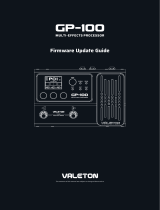
Using the Graphical User Interface 19
For every component on your system that is current with the version in the
SUU repository, SUU displays a green checkmark icon .
For system components that are newer than the repository version
components, SUU automatically enables the Enable Downgrade check box if
the comparison report lists only the components to be downgraded and no
components to be upgraded.
If the comparison report lists both upgrade and downgrade components, you
must select the components to be downgraded, select the Enable Downgrade
check box, and click the Downgrade button to downgrade these system
components to the repository versions. For information on downgrading
components, see "Downgrading Components".
SUU displays the Inapplicable icon if the component version on your system
equals the repository version. In that case, the update is not applicable on
your system.
If the upgrade components are available, SUU enables the Upgrade button
on the upper right corner of the Comparison Report (see Figure 2-8). For
information on upgrading components, see "Upgrading Components".
Table 2-1. Criticality Levels
Criticality Level Status
Urgent It is highly recommended to apply this update as soon as
possible. The update contains changes to improve the
reliability and availability of your Dell system.
Recommended It is recommended to apply this update during your next
scheduled update cycle. The update contains feature
enhancements or changes that help keep your system
software current and compatible with other system
modules (firmware, BIOS, drivers, and software).
Optional It is recommended that you review the specifics about the
update to determine if it applies to your system.
The update contains changes that impact only certain
configurations, or provides new features that may/may not
apply to your environment.
Inapplicable This update is not applicable on your system.
The component version on your system equals the
repository version and hence, no update is required.





















